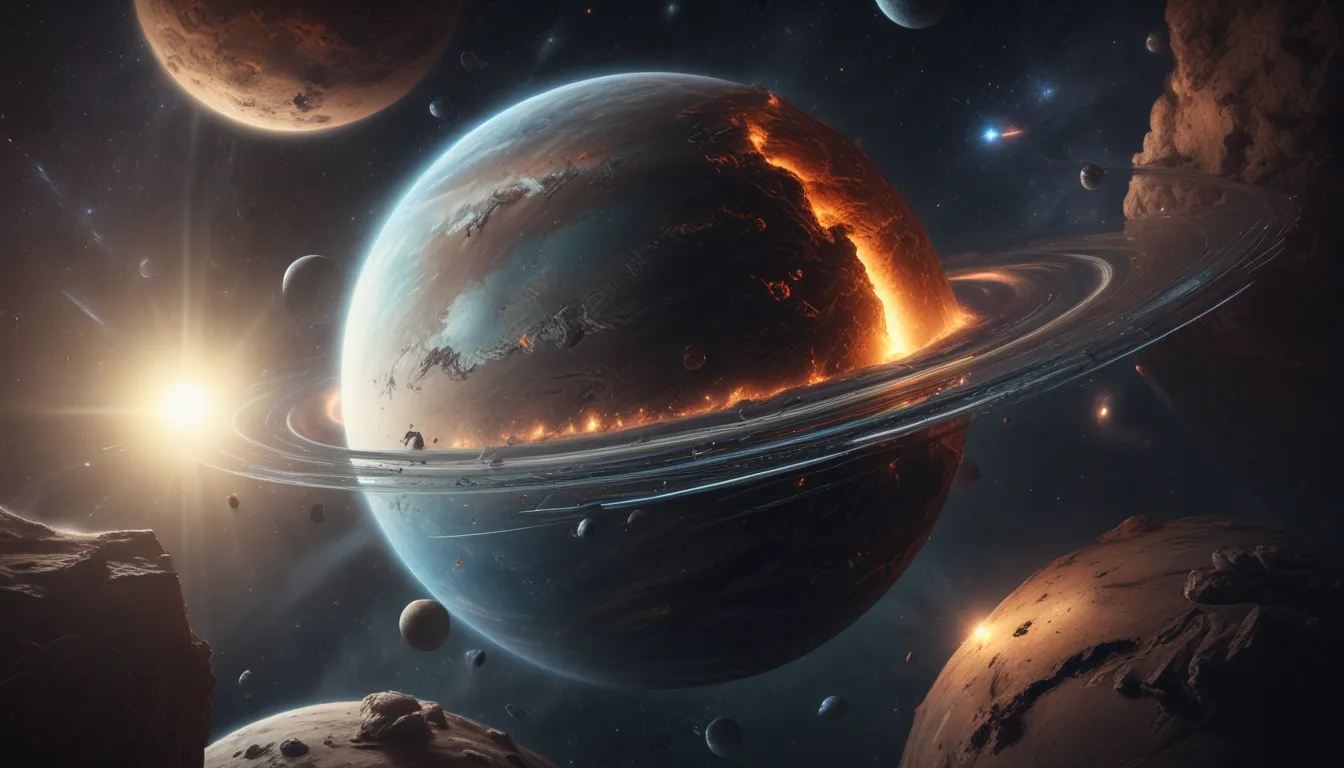The pictures we use in our articles might not show exactly what the words say. We choose these pictures to make you interested in reading more. The pictures work together with the words but don’t take their place. The words still tell you the important facts.
Have you ever wondered what lies beneath the stunning surfaces of planets in our solar system? The planetary core, a central and mysterious region, holds the key to understanding a planet's formation, structure, and ability to sustain life. In this informative article, we will explore the captivating world of planetary core composition and uncover 9 surprising facts that will leave you in awe. From the role of iron and nickel in core composition to how it influences magnetic fields, internal heat, and tectonic activities, get ready for an enlightening journey through the depths of the universe.
Key Takeaways:
- Planetary cores, primarily made of iron and nickel, shape a planet's composition, generate magnetic fields, and influence internal heat and tectonic activities.
- Gas giant planets have cores made of dense gases and ices, surrounded by thick layers of gas. Differentiation processes cause dense materials to sink and lighter ones to rise to the surface.
The Crucial Role of a Planet’s Core in Composition
At the heart of every planet lies its core, a central region that determines the planet's composition and characteristics. The core consists of a concentration of elements and minerals that define the planet's structure.
Iron and Nickel: The Building Blocks of Planetary Cores
Iron and nickel are the primary components of planetary cores. These elements provide the density and magnetic properties essential for a planet's formation and stability, shaping its core composition.
Unveiling Other Elements in Planetary Cores
Alongside iron and nickel, some planetary cores may also contain elements such as sulfur, carbon, or even precious metals like gold and platinum. These additional elements contribute to the planet's unique properties and composition.
Diverse Core Sizes Across Planets
Planets vary in size, and so do their cores. The size of a planet's core can range from a small fraction of its total volume to a significant portion, depending on factors such as composition and formation.
Magnetic Fields: The Guardian of Planetary Cores
Molten iron-rich cores in planets like Earth play a vital role in generating magnetic fields. These magnetic fields act as protective shields against harmful solar radiation and shape the planet's magnetosphere.
Impact of Core Composition on Internal Heat
The composition of a planet's core can influence its internal heat. Some cores contain radioactive elements that generate heat through decay processes, while others maintain cooler temperatures due to less radioactive materials.
Core Influence on Plate Tectonics
The movement of tectonic plates on a planet's surface is closely linked to activities within its core. Convection currents driven by the core's heat play a significant role in shaping the planet's geological features and movements.
Distinct Cores of Gas Giants
Gas giant planets like Jupiter and Saturn boast cores made of dense gases and ices, surrounded by thick layers of gas. This unique composition sets them apart from solid planets and contributes to their distinct characteristics.
The Differentiation Process of Planetary Cores
During a planet's formation, its core undergoes a process called differentiation. This process involves the separation of materials based on their density, with denser materials sinking to the core and lighter ones rising to the surface.
Conclusion
Exploring the composition of planetary cores unveils a world of marvels and mysteries within our universe. From the iron and nickel core of Earth to the complex compositions of gas giants like Jupiter, each planet offers a unique insight into the dynamics of celestial bodies. By studying planetary core composition, we gain not only a deeper understanding of the universe but also valuable insights into Earth's own core and its impact on our planet's magnetic field and geological stability.
FAQs
Q: What is a planetary core?
A: A planetary core is the central region of a celestial body, typically composed of dense materials like metal and rock.
Q: What elements are commonly found in Earth's core?
A: Earth's core is mainly composed of iron and nickel, with traces of other elements.
Q: Do all planetary cores have the same composition?
A: No, planetary cores can vary in composition. Gas giants like Jupiter have cores made up of rock, metal, and hydrogen compounds, while ice giants like Neptune have cores surrounded by icy compounds.
Q: Is Earth's core solid or liquid?
A: The outer core of Earth is molten, while the inner core is believed to be solid due to high pressures despite extreme temperatures.
Q: Can a planet's core composition impact its magnetic field?
A: Yes, the composition and dynamics of a planet's core play a significant role in generating its magnetic field.
Q: How do scientists study planetary core composition?
A: Scientists employ various techniques such as seismic waves, magnetic field measurements, and computer simulations to study planetary core composition.
Q: Are there exoplanets with unique core compositions?
A: Definitely, exoplanets exhibit diverse core compositions based on their distance from their host stars and the materials present during their formation.
Q: Can we estimate a planet's core size?
A: Researchers can estimate a planet's core size by analyzing its mass, density, and other properties using observational data and theoretical models.
Q: How does studying planetary cores help us understand Earth's core?
A: By analyzing the compositions and dynamics of planetary cores, scientists gain valuable insights into Earth's core behavior and its influence on our planet's magnetic field and geological processes.
Unraveling the secrets of planetary core composition not only expands our knowledge of the universe but also sheds light on the fascinating dynamics of celestial bodies. Each fact revealed opens a gateway to understanding Earth’s intricate inner workings, inspiring further exploration and discovery in the vast realm of planetary science.






